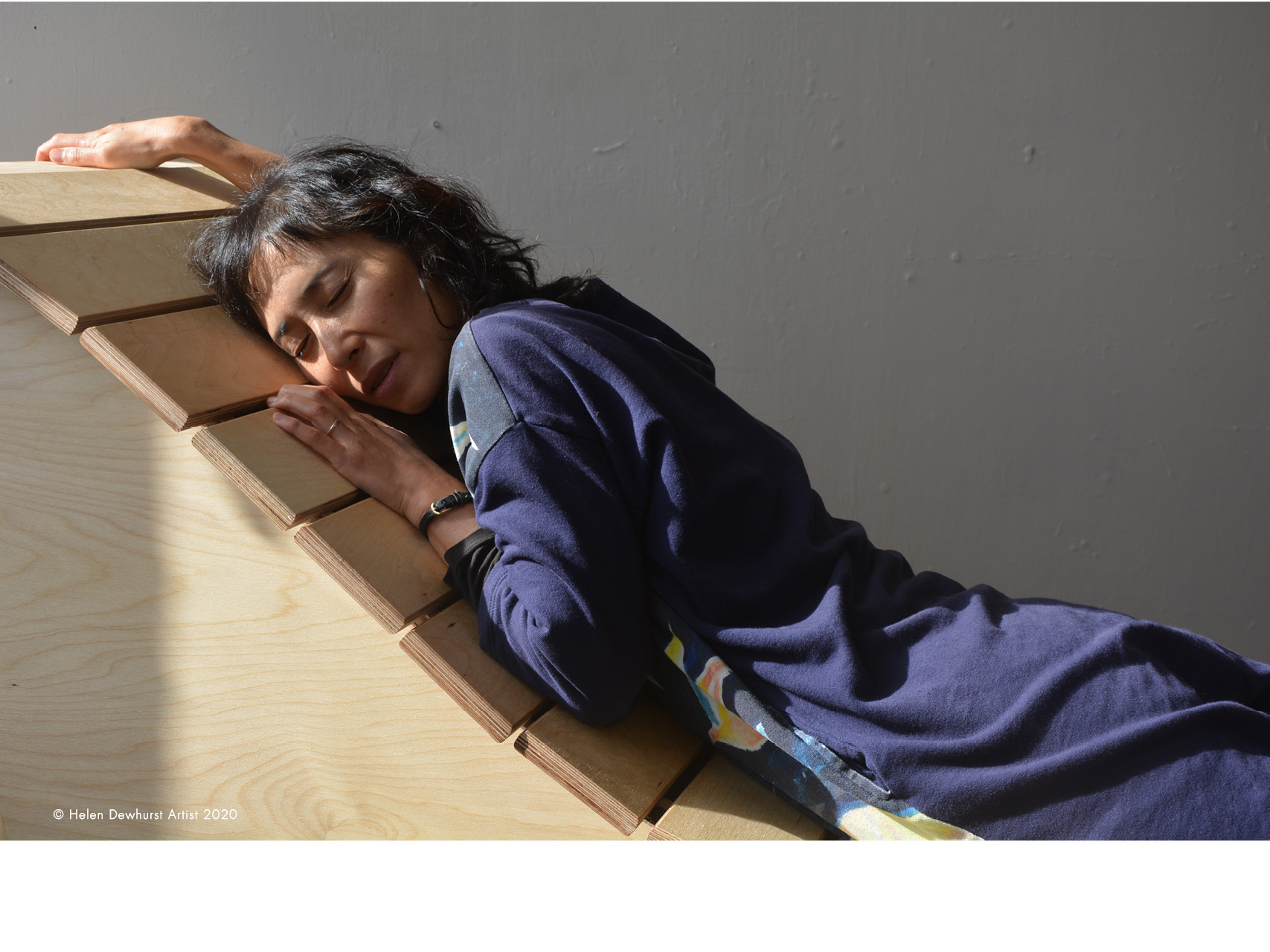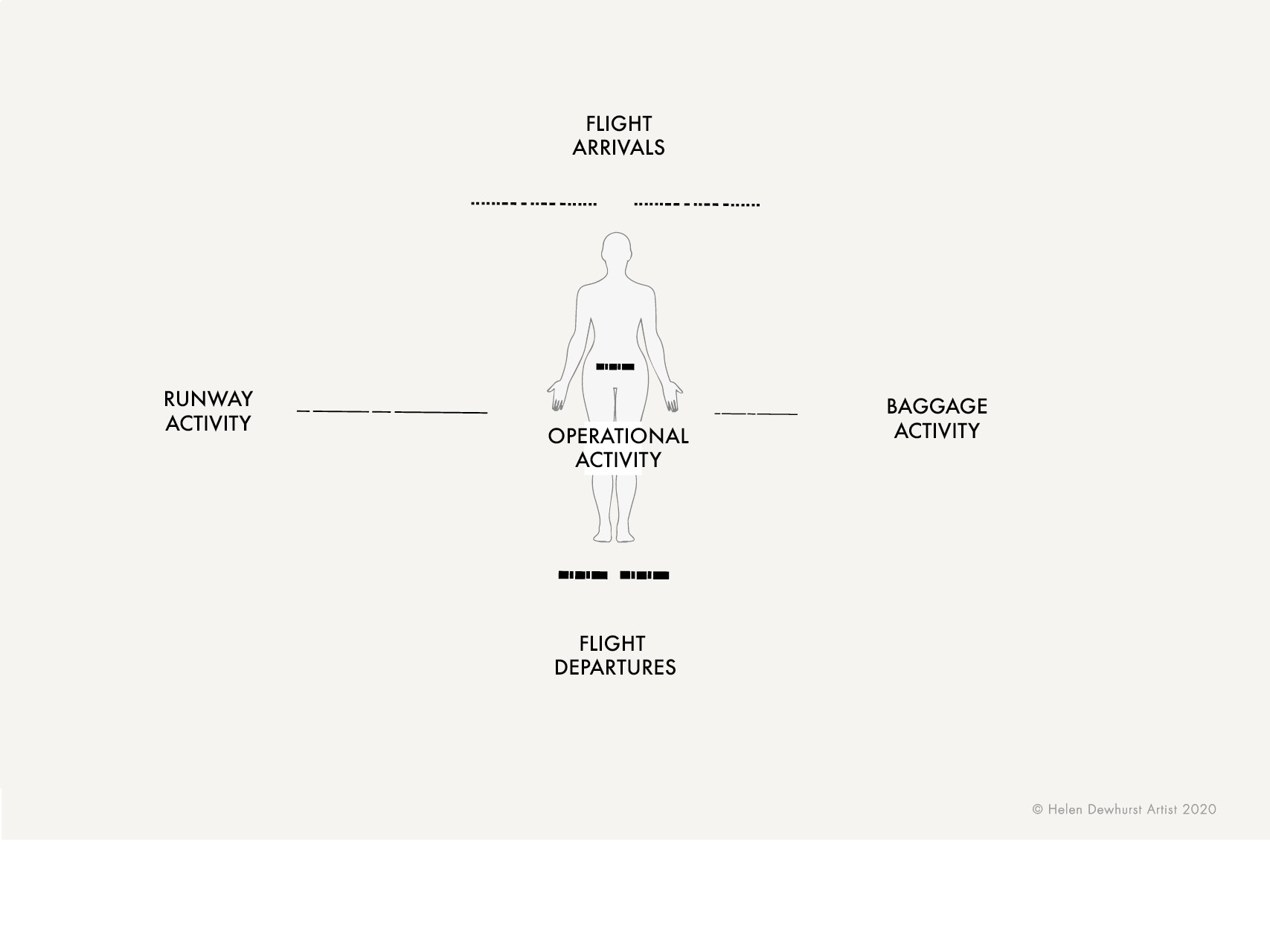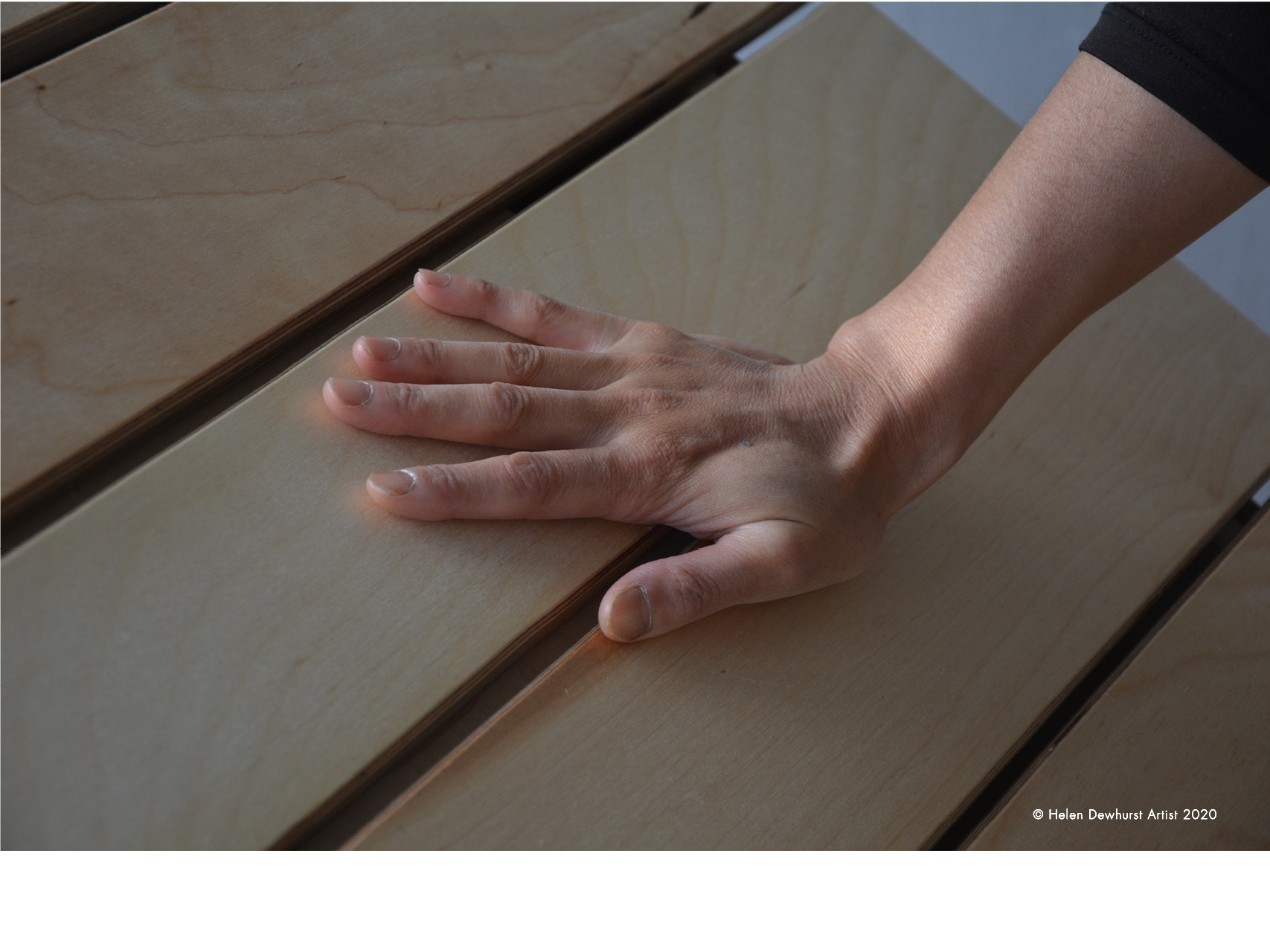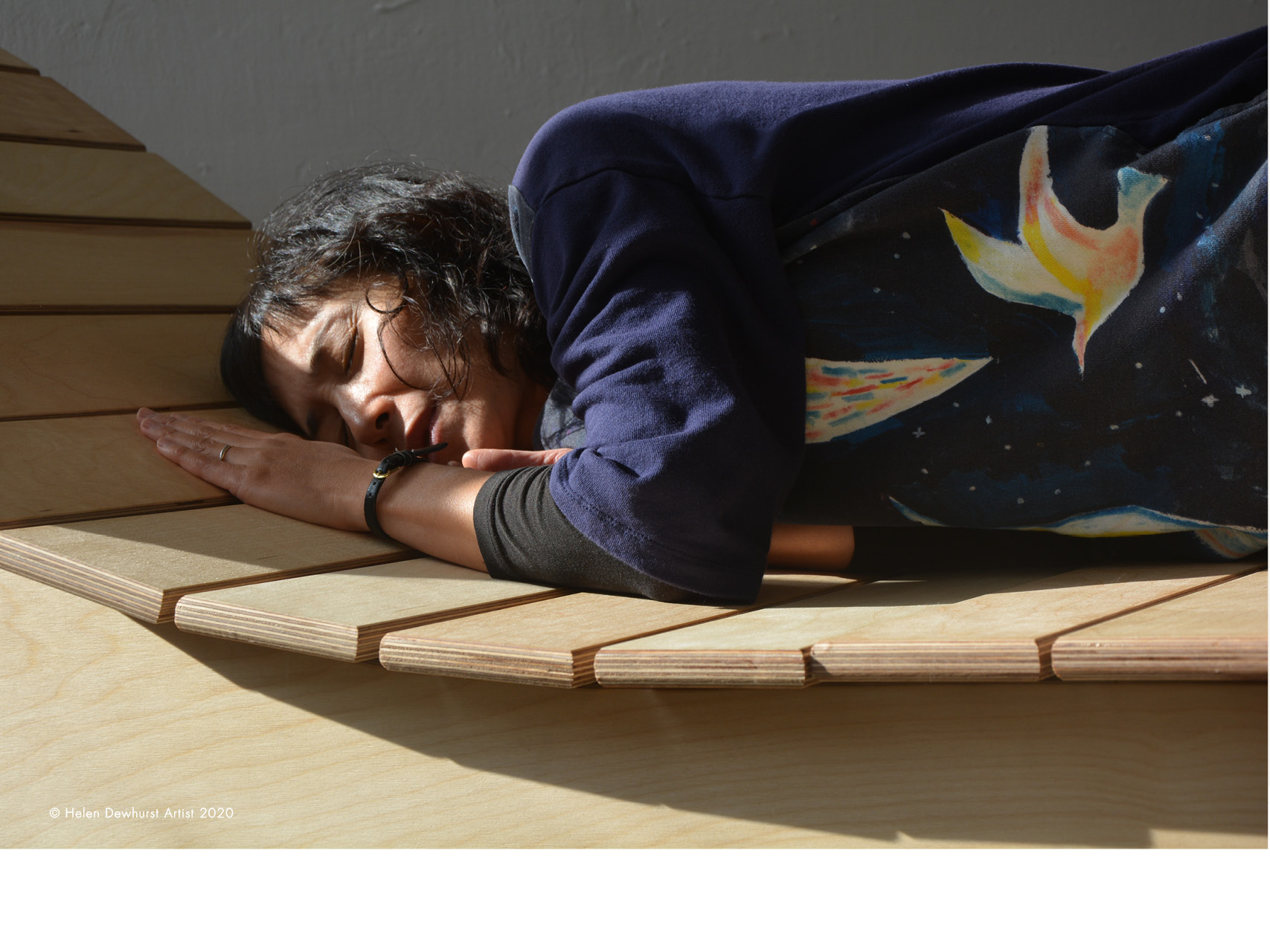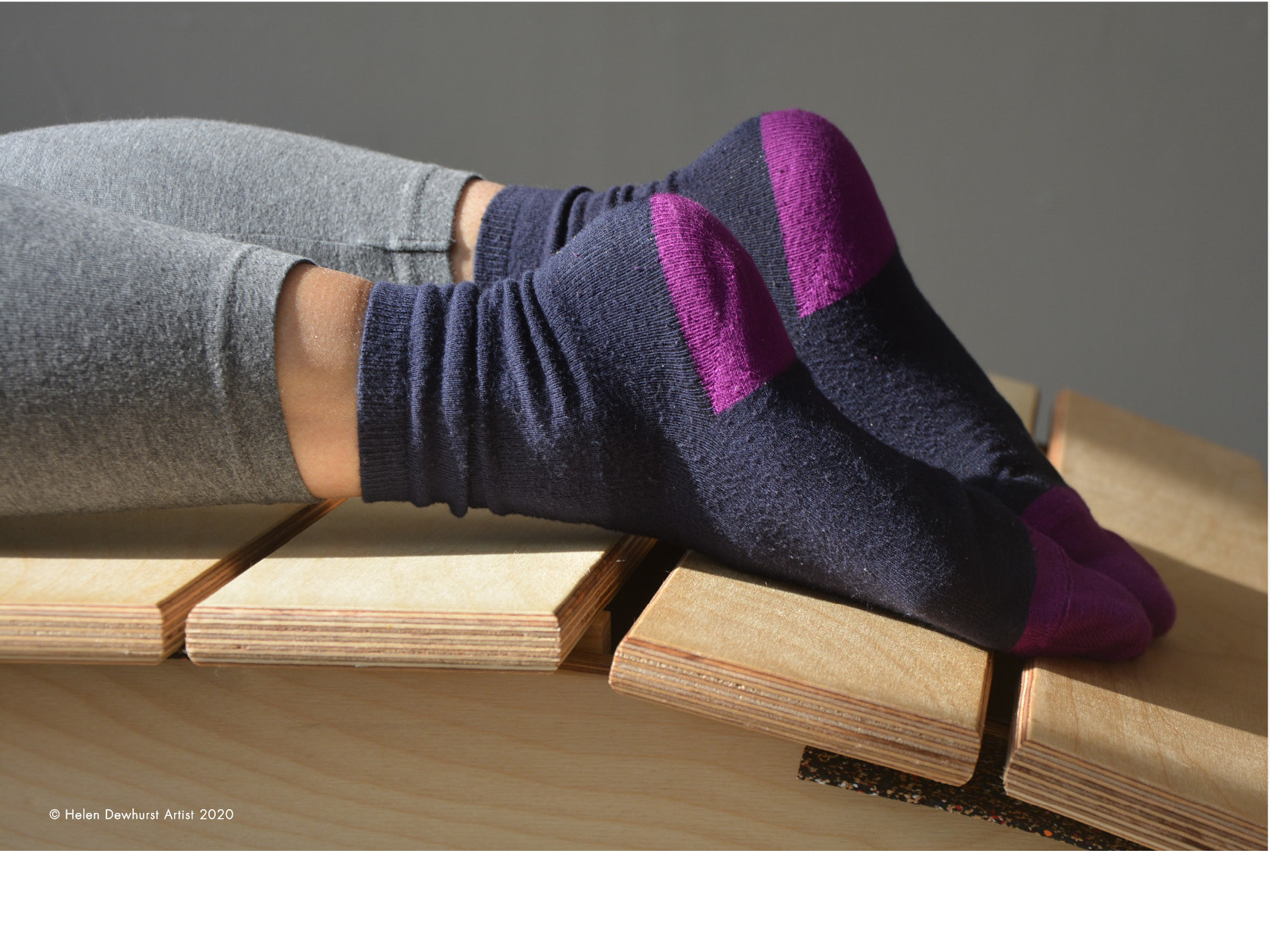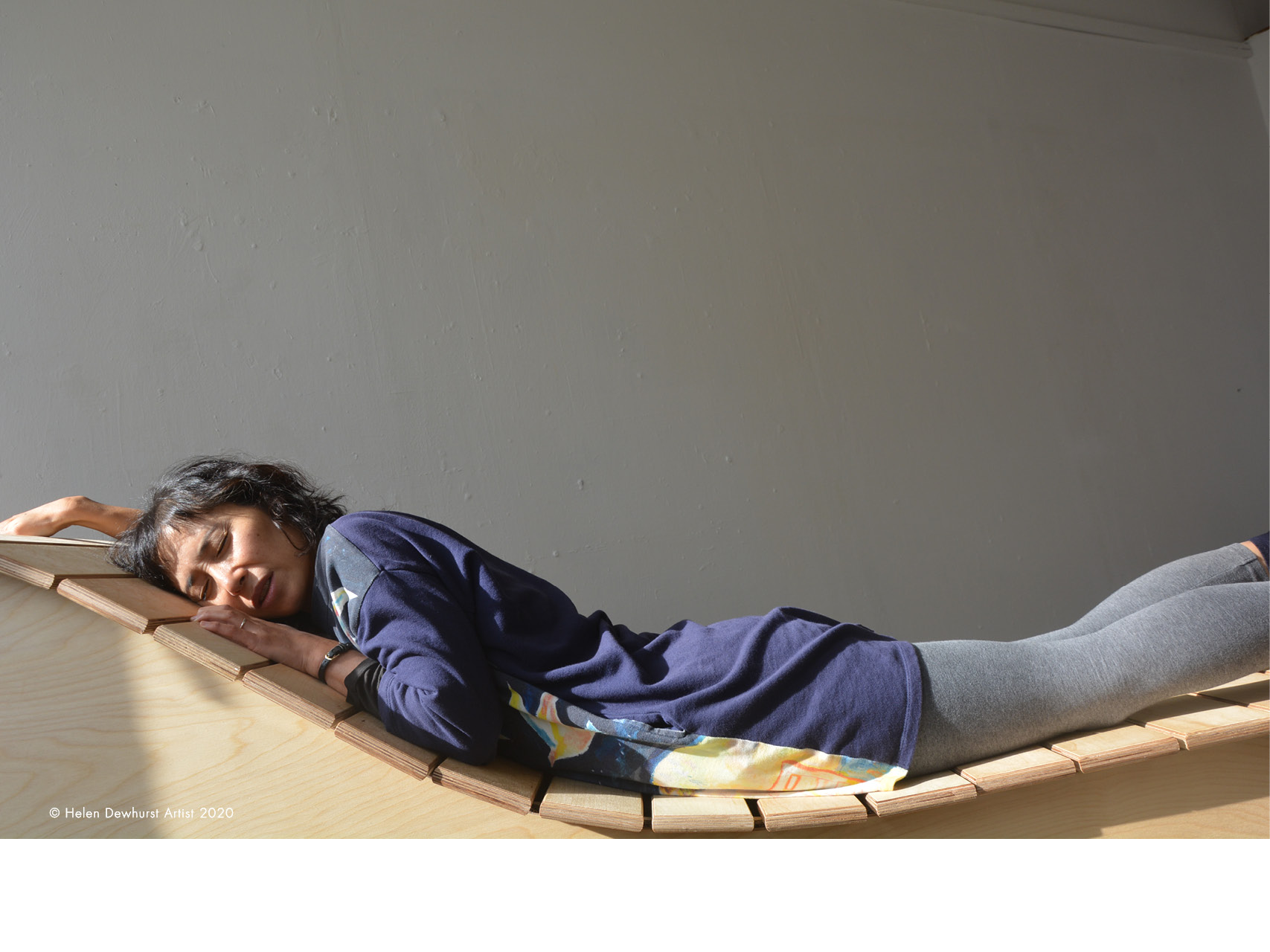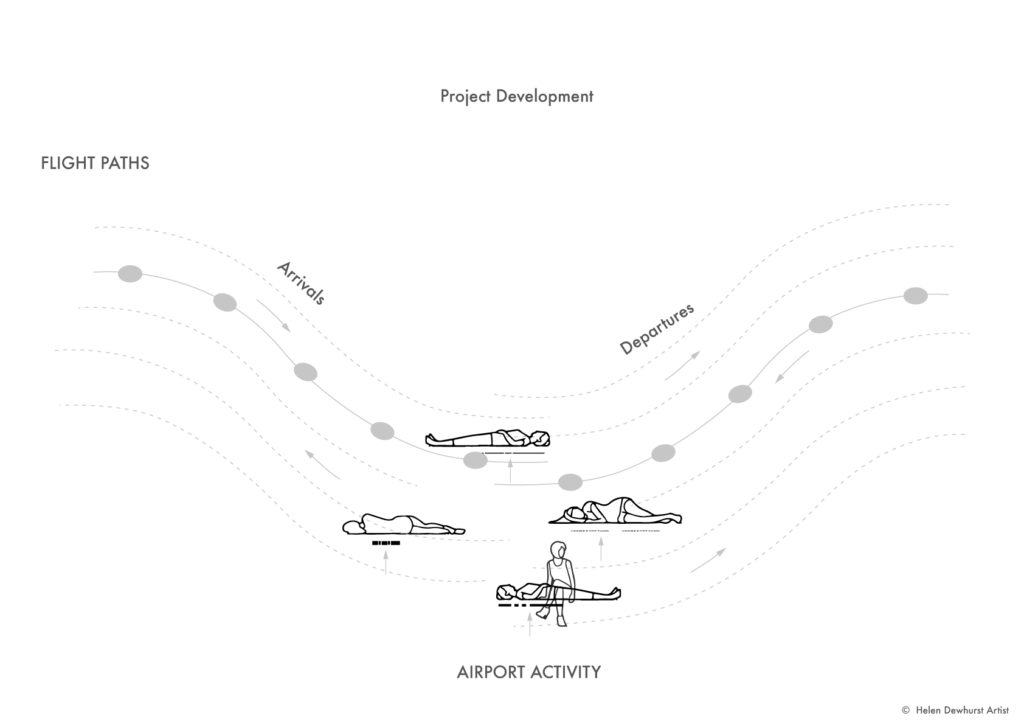TRANSIT
Durational, live, data-generated, tactile sound composition
TRANSIT is a live, physical experience of Gatwick Airport as vibrational sound, experienced via a reclining sound-chair. Operational data, streamed from the Airport over 48 hours, is translated into rhythm and performed on the body via tactile speakers. Audiences experience the Airport as a ‘live entity’, appropriate to that point in the day.
Channelling data from different areas of the Airport, data-patterns combine to form a time-situational, rhythmical, tactile arrangement, felt on the body as vibration. The Airport system becomes the composer, with departing and arriving flights directing sonic experience. A sensory experience of data, the piece is intended as a tool for listening ‘more intimately’ to the Airport, raising considerations around its long-term sustainability.
The project ran through Lockdown, a period where all flights were grounded, the Airport closed down and then opened up again, a unique point in time to be listening to an Airport.
Images + Video:
Project Documentation + supporting imagery
Includes visual sample of code translating data into rhythm.
Sound:
Sample of data-generated, vibrational, interference patterns.
Vibrational, reclining Sound-Chair:
Multi-channel audio, vibrational transducer speakers
Data-Sound Interface:
Software translates operational data from Gatwick Airport – captured over 48 hours – into sound.
Separate channels of data from different areas of the Airport, streamed simultaneously, combine to generate tactile, time-situational ‘interference patterns’, felt on the body as vibration. Playing the data directly, rhythms evolve over time, in relation to changes in Airport activity.
Flights taking off and landing, trigger moving sound sequences along the chair’s surface, experienced as moving ‘across’ or ‘along’ the body.
Development:
The piece is being developed as an immersive, tactile and spatial-sound experience for public space, for audiences either considering, or engaged in, travel.
Credits:
Helen Dewhurst Artist
Jeph Vanger Sound Design
Andrew Lea Artificial Intelligence Data Scientist, Visiting Research Fellow, University of Brighton
Baran Elitez Developer
Carpentry SeaSaw Carpentry
Supported by:
University of Brighton DRIVA Arts DRIVA ‘Superfused’ Collaboration Award 2020
Funded by:
The European Regional Development Fund
Arts Council England’s Creative Local Growth Programme




